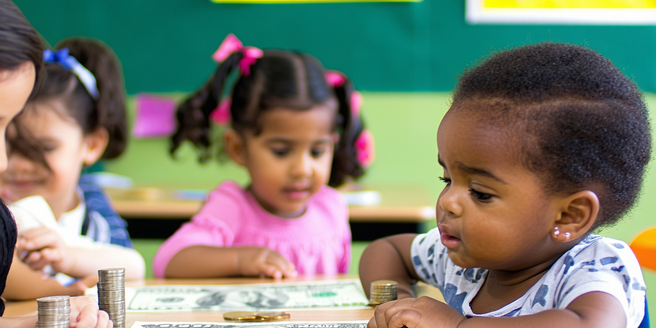Understanding the Importance of Credit for Children
Teaching children about credit early can set them up for financial success in adulthood. Understanding the basics of credit, including how credit scores work and why maintaining good credit is important, empowers them to make informed financial decisions. It’s critical for children to learn that credit is not just about borrowing money, but about building trust and reliability. As they grow, learning about the consequences of poor credit and the benefits of good credit will help them navigate adult responsibilities with confidence. By introducing the significance of credit at a young age, parents can foster responsible spending and budgeting habits, ultimately leading to a financially literate future generation.
Introducing Basic Financial Concepts to Kids
Introducing children to basic financial concepts like saving, budgeting, and earning can be a fun and educational experience. Start by giving them a small allowance and teaching them how to manage it. Use real-life scenarios to explain the value of money and the importance of saving for future needs or desires. You can also introduce them to simple budgeting apps designed for children to make the learning process interactive. Encourage them to set financial goals, whether it’s saving for a toy or donating to a cause they care about. By incorporating these financial lessons into everyday activities, children learn the foundational skills necessary for managing money effectively and responsibly.
Choosing the Right Financial Tools for Youth
When selecting financial tools for children, it’s important to choose options that are age-appropriate and educational. Options like savings accounts, prepaid debit cards, or financial literacy apps can provide practical experience. A savings account helps teach about interest and the habit of saving. Prepaid debit cards offer a safe way to learn about digital transactions and budgeting, while financial literacy apps use engaging methods to reinforce financial concepts. It’s crucial to assess and review these tools regularly to ensure they meet the evolving needs of the child. Involving children in this selection process empowers them, making them more invested in their financial education journey.
Setting Up a Joint Bank Account with Your Child
A joint bank account is an excellent tool for parent-child financial collaboration. It provides an opportunity for children to learn about banking and money management under parental guidance. This hands-on experience educates them about deposits, withdrawals, and balancing an account. They gain invaluable skills that will serve them well in adulthood. Such accounts also promote open discussions about financial responsibilities. Parents can use this as a chance to instill good banking habits and discuss concepts like saving and budgeting. Additionally, monitoring the account together can strengthen trust and provide teachable moments as spending and saving decisions are reviewed.
Teaching Responsible Spending and Budgeting
Teaching children about responsible spending and effective budgeting is crucial for their financial literacy. Begin by showing them how to create a simple budget that allocates allowance or earnings across essentials, savings, and discretionary spending. Encourage them to track their expenses and savings, promoting accountability and awareness. Discuss the importance of distinguishing between needs and wants. Introduce them to the concept of short-term and long-term financial goals to help them understand the benefits of saving. By allowing them to make spending choices and learn from mistakes, you empower them to develop self-control and financial savvy, laying the groundwork for a stable financial future.
Monitoring and Reviewing Credit Reports Together
Reviewing credit reports as a family activity can demystify the concept of credit for children. Explain what a credit report is and its significance in financial decisions. Going through a report together can teach them how credit scores are calculated and the importance of maintaining them. Discussing real-life scenarios can make the learning experience more relatable and impactful. This process can also highlight the impact of timely bill payments and responsible borrowing. By actively engaging in this practice, children learn the value of responsible credit behavior and become more prepared to manage their credit independently as they grow older.


